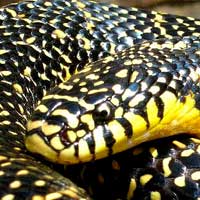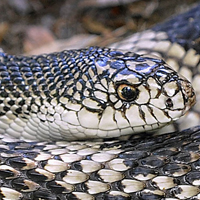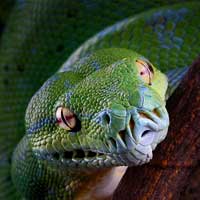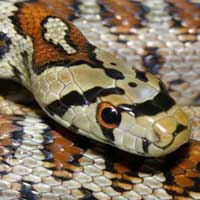Everything You Need to Know About the Amur Russian Rat Snake
The Amur Russian Rat Snake, scientifically known as Elaphe schrenckii, belongs to the Colubridae family, which is the largest family of snakes, encompassing a wide range of non-venomous and mildly venomous species known for their adaptability and diverse habitats.
Scientific Name: Elaphe schrenckii
Snake Family: Colubridae

Introduction to the Amur Russian Rat Snake
The Amur Russian Rat Snake (*Elaphe schrenckii*) is a non-venomous species native to the forests and grasslands of East Asia, particularly in Russia and China. Known for its striking black and white pattern, this snake is a favorite among reptile enthusiasts due to its calm demeanor and adaptability. With proper care, the Amur Russian Rat Snake thrives in captivity, making it an excellent choice for both beginner and experienced keepers.
Creating the Ideal Habitat for the Amur Russian Rat Snake
The Amur Russian Rat Snake requires a well-constructed habitat that mimics its natural environment. Here are key considerations for setting up their enclosure:
- Enclosure Size: A minimum of 40 gallons for adults with ample climbing opportunities.
- Temperature Gradient: Maintain a gradient between 75-85°F during the day and 65-75°F at night.
- Humidity: Keep humidity levels at 50-60% with occasional misting.
- Substrate: Use aspen shavings, cypress mulch, or soil to replicate their natural flooring.
- Enrichment: Provide branches, hides, and a water dish large enough for soaking.
Refer to the table below for quick habitat guidelines:
| Habitat Element | Recommended Specifications |
|---|---|
| Enclosure Size | 40+ gallons |
| Temperature | 75-85°F (day), 65-75°F (night) |
| Humidity | 50-60% |
| Substrate | Aspen shavings, cypress mulch, or soil |
Diet and Feeding Habits of the Amur Russian Rat Snake
Feeding the Amur Russian Rat Snake is straightforward, as it primarily consumes rodents in captivity. Follow these feeding recommendations:
- Juveniles: Feed pinky mice every 5-7 days.
- Adults: Offer adult mice or small rats every 10-14 days.
- Prey Type: Use pre-killed prey to ensure safety and prevent injuries.
- Water Access: Always provide fresh water in a shallow dish.
A consistent feeding schedule supports their growth and overall health.
Behavior and Temperament of the Amur Russian Rat Snake
The Amur Russian Rat Snake is known for its active and curious nature, making it an engaging species to observe. Key behavioral traits include:
- Climbing Enthusiasts: These snakes love to climb, so vertical space and branches are essential.
- Diurnal Activity: They are primarily active during the day, exploring their environment.
- Docile Temperament: With regular handling, they can become accustomed to human interaction.
- Defensive Posture: When threatened, they may flatten their head or vibrate their tail, mimicking venomous species, but they rarely bite.
Understanding their behavior will help create a more enriching environment for this snake.
Health and Lifespan of the Amur Russian Rat Snake
With proper care, the Amur Russian Rat Snake can live up to 20 years in captivity. To ensure their health, focus on these areas:
- Common Health Issues: Watch for respiratory infections, scale rot, and shedding problems.
- Preventative Care: Maintain proper humidity, clean the enclosure regularly, and provide a balanced diet.
- Veterinary Check-ups: Schedule annual visits with an exotic animal veterinarian.
Regular monitoring of their behavior and physical condition will help prevent and address health concerns early.
Reproduction and Breeding of the Amur Russian Rat Snake
Breeding the Amur Russian Rat Snake requires replicating their natural seasonal cycles. Important aspects include:
- Breeding Season: Occurs in spring, following a winter brumation period.
- Clutch Size: Females typically lay 6-12 eggs per clutch.
- Incubation: Eggs should be incubated at 82-85°F for 50-60 days.
With proper preparation and care, breeding can be a rewarding experience for keepers.
Handling and Care Tips for the Amur Russian Rat Snake
Proper handling and care are essential for the well-being of your Amur Russian Rat Snake. Here are some best practices:
- Handle your snake gently and support its body fully.
- Avoid handling immediately after feeding to prevent stress or regurgitation.
- Maintain a clean and hygienic enclosure to prevent health issues.
- Provide enrichment through climbing structures and varied enclosure layouts.
- Monitor their behavior for signs of stress, such as excessive hiding or refusal to eat.
Building a positive relationship with your snake ensures a rewarding experience for both you and your pet.








